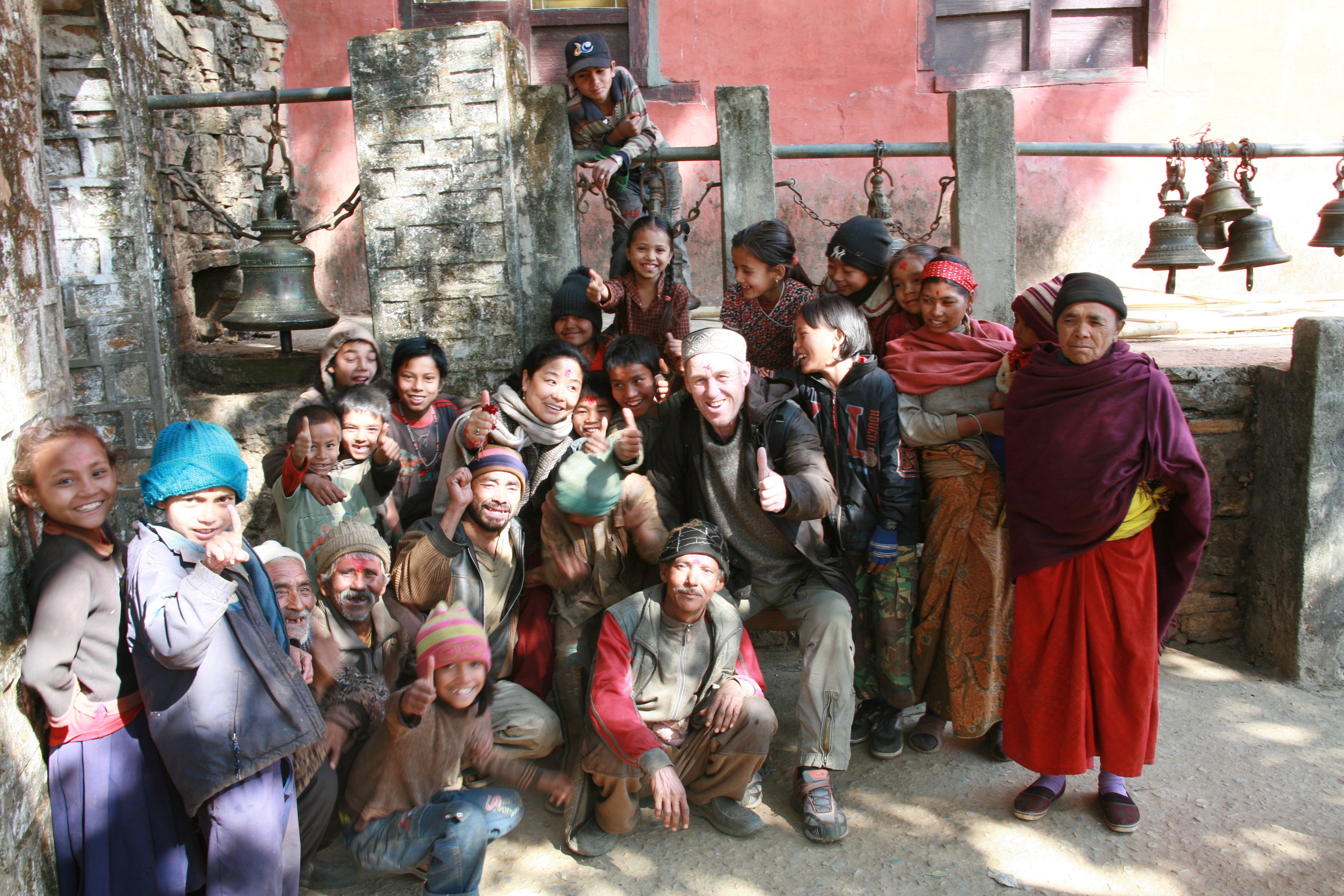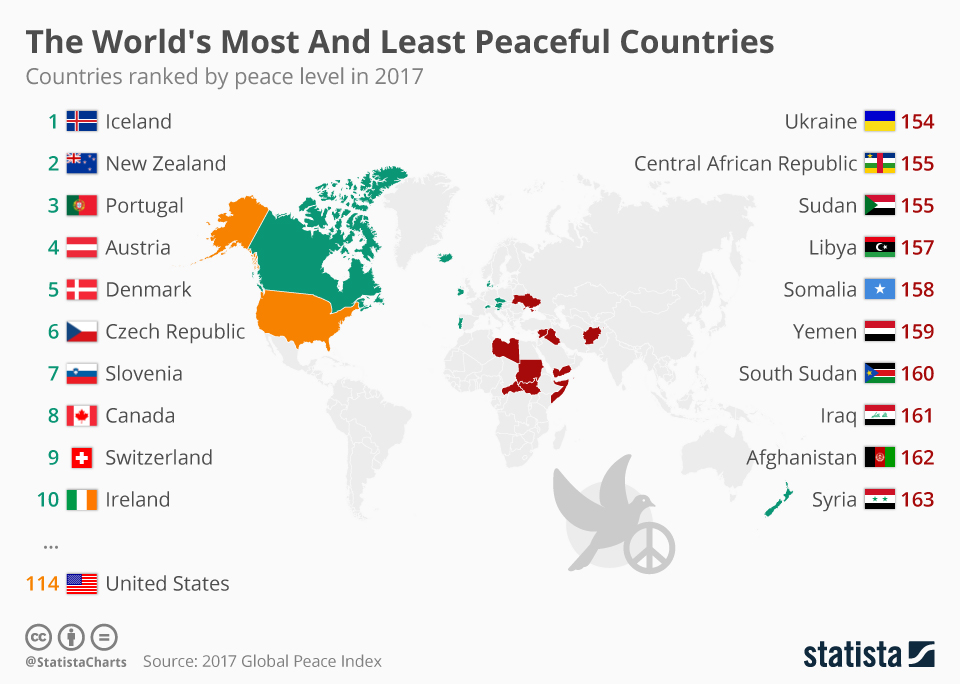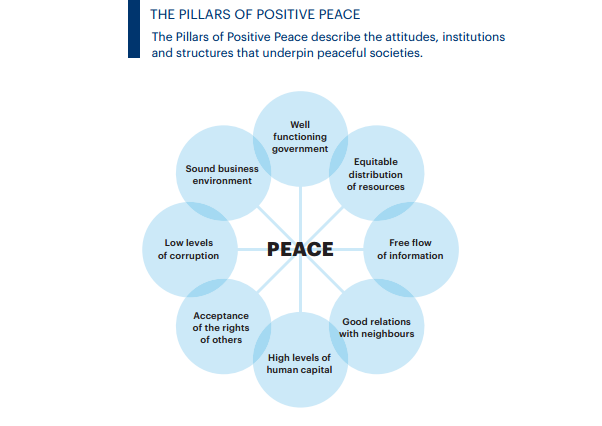Steve Killelea is an impressively accomplished man, from tech to peace. Business wise, he is extremely successful. He has built his fortune in the tech industry. He formed Integrated Research in 1988, which manages systems for companies such as Visa, Mastercard, American Express, and the New York, London and Hong Kong stock exchanges. He also has a venture capital fund called Smarter Capital, which invests in tech.
Yet the ways he has sought to make the world a better place are far more impressive. He is the creator of the Institute for Economics and Peace, the leading think tank on peace, and how it is created. They publish The Global Peace Index every year, which ranks every country by peacefulness. This index is used by major organisations such as the World Bank and the UN, as well as governments and universities throughout the world. He hopes that the knowledge the institute is generating will be used to create a more peaceful world. He also founded The Charitable Foundation in 2000. Though this, he has donated millions, and is one of Australia’s largest individual donors to overseas aid. He has “substantially impacted 2.6 million people’s lives”.
Substantially impacted 2.6 million people’s lives
So Steve Killelea is obviously generous with his wealth. Yet he’s also incredibly generous with his time. He granted us extra time on the interview so he could answer all our questions, and gave full and thoughtful responses to each one. It can be intimidating meeting someone so impressive, yet Steve made sure to put everyone at ease. Over all, I was struck by how incredibly humble and kind he had been throughout our encounter, and was honored to have met someone who has given the world so much.
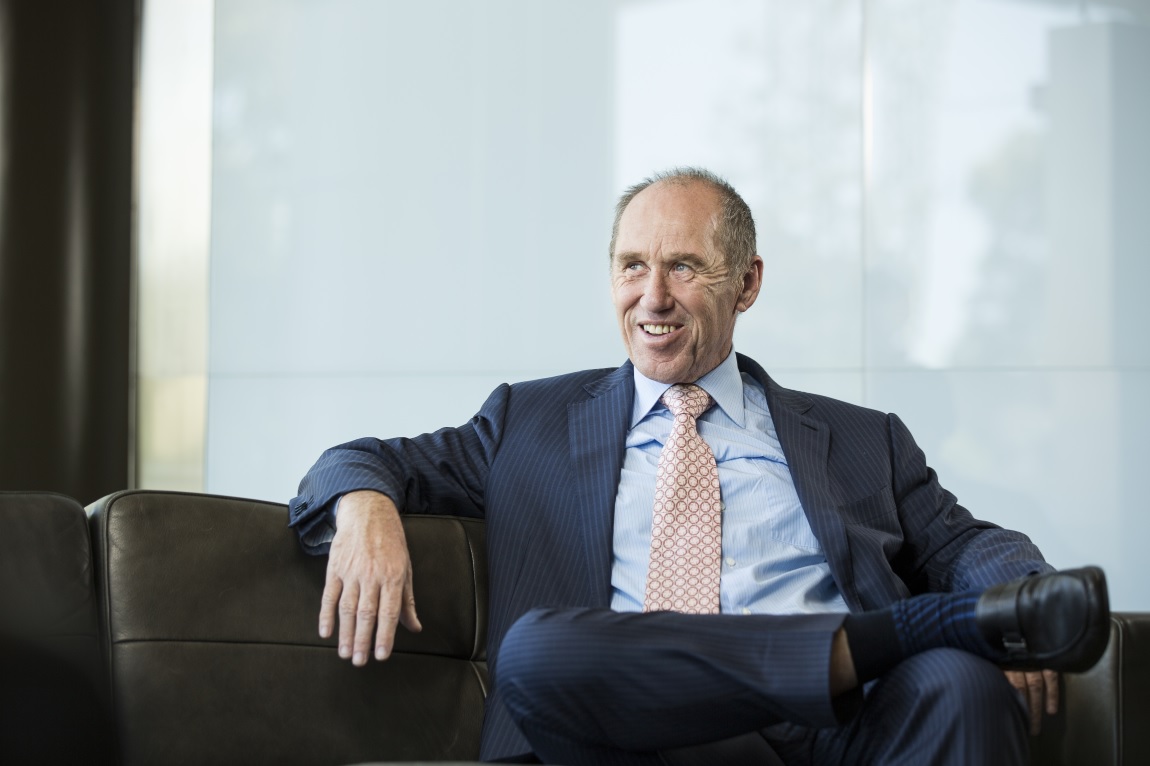 Q. Looking back on your remarkable philanthropic career, what do you see as your greatest successes and greatest disappointments? What do you wish you’d done differently?
Q. Looking back on your remarkable philanthropic career, what do you see as your greatest successes and greatest disappointments? What do you wish you’d done differently?
I see two things. First there’s the establishment of The Charitable Foundation. I got involved with development aid about 25 years ago, but the Foundation was officially established in 2000. Looking back on the projects we’ve done, we have substantially impacted 2.6 million people’s lives. That’s a huge number of people. The lesson which I’ve learned is that in the developing world, small amounts of money go a long way. For example, during a famine, an average of 30 to 40 cents a day is sufficient to feed one person with enough nutrition to keep them alive. In a lot of these extreme conditions, you’re already in the back end of a drought, it’s usually towards the end of the dry season. So in most instances you only need to support their feeding for about 90 days. The other instances in which they need emergency feeding relate to a conflict, and when the conflict settles down, people can get back on their feet. Again, it is not necessary to support them for long periods of time.
The same applies to clean water. The first project I did on clean water was in Laos. That was when it was still a closed country. So literally no foreigners were getting up there at all. And we put water in there. It cost less than $20 per head. I think our first project helped about thirty thousand people. We reduced the death rate for children under 5 from 18% down to 12%, and got rid of about 30% of the disease in the community, because it was waterborne. So those are some of the things we have achieved and that I have learnt through the work of The Charitable Foundation. It’s got a corpus which is invested, then we only spend the income coming off that corpus each year. That is a foundation that’s got another hundred year life in it.
The second thing which I look back at, and which was really successful, is the establishment of the Institute for Economics and Peace. It’s flagship research output, the Global Peace Index, is one of the world’s leading indexes now. We’re recognized in our area as being one of the top think tanks in the world. And the major intergovernmental organizations, such as the OECD, World Bank, the UN, the Commonwealth Secretariat, are using our work regularly in all sorts of ways. The outputs of our research are also taught in thousands of university courses round the world. So that’s really quite impactful.
One of the areas I’m probably a bit disappointed in relates to aspects of the effectiveness of aid. When we analyse the work of development aid organisations, we can see inefficiencies. Some NGOs are more focused on fundraising than addressing the problems in the developing countries.
What I’ve found is that giving away money isn’t that easy. We really had to focus and be rigorous around selecting the projects, and creating the right governance and reporting structures and then checking the outcomes. Some of the projects we supported we later found out had corruption, and sometimes we were just lied to about the results. We had one well-known aid organization tell us they’d completed building the wells associated with the project. We isolated this by using GIS coding and having the implementing NGO stamp the wells with a small plaque. When we checked the GIS-code coordinates the wells were not there.
The second area which was disappointing was realizing how little most world leaders are about what creates peace. There’s a lot of emphasis on security: “Let’s find the bad guy and whack him.” And we end up with failures like Afghanistan, Iraq, or Libya. We find the bad guys, we go and whack ‘em out, and leave behind much more chaos then there was to begin with.
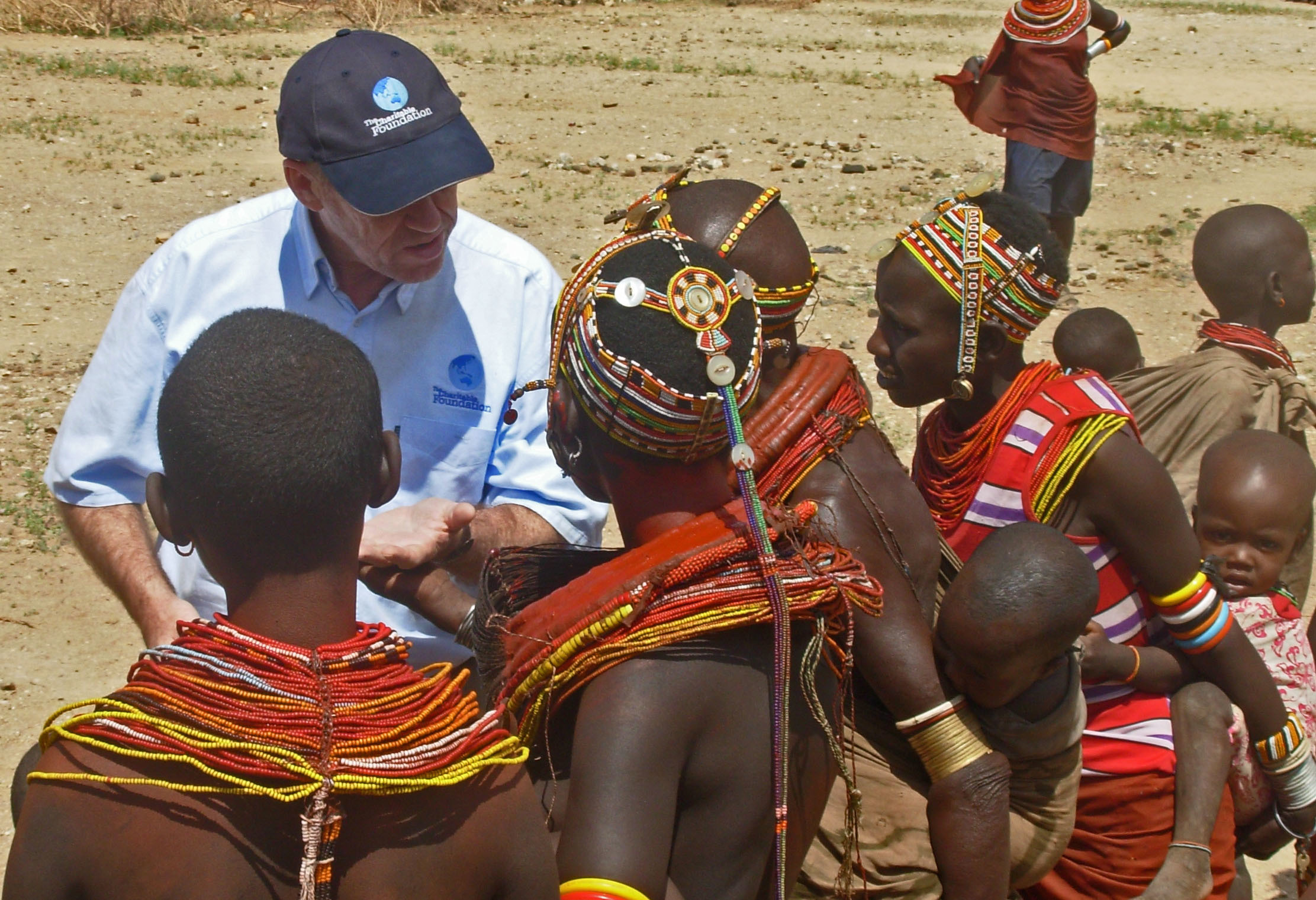 Q. How did what you learned in your tech ventures and the business world translate into launching the Institute for Economics and Peace? Do you use the same mindset in both ventures?
Q. How did what you learned in your tech ventures and the business world translate into launching the Institute for Economics and Peace? Do you use the same mindset in both ventures?
Having set up a couple of global IT companies, I’ve worked out a certain way of operating. Software development is centered around an initial product and incrementally updating it regularly, over a long period of time. So when you look at the concept of an index, and then research around the index, that’s exactly what we’ve done at IEP. I also make use of a lot of the management techniques which I used at Integrated Research in the early days of starting it up, at IEP.
As we’ve gone through the growth phases, it’s pretty natural to understand the next layer of management structures needed. When you’re smaller, and you have four people around a table, communication is pretty good. Everyone knows everything that’s going on. But as you grow, the communication process breaks down, and that affects the projects. When you grow to thirty people (the current size of IEP), most people think they know what the mission is, but they don’t. When you get to bigger companies, with let’s say 500 people, even though you’re communicating the missions regularly, you have to build year long communication processes, so everyone has the right vision and is on the same page. As the companies become bigger so do the structures and the channels of communication and processes need to be developed, rules and guidelines start having to get formalised, HR grows, and a whole lot of other things.
But the other thing that is key is understanding marketing and sales. One of the things which has been highly successful for IEP was to go hard on global PR campaigns from the very first launch. It’s one thing to have a creative, great product, but if no one knows about it, what’s the point? One of the measures of success, of impact, is how much people actually know about what you do. Even if it’s just understanding the word peace, that’s enough, because you’re actually getting a focus on something positive. And that’s part of why our main ‘product’ is called the Global Peace Index instead of the Global Violence Index. The idea is to study the positive.
Also, in the computer industry, the aim is to get a product to market as soon as possible. It’s termed “minimum viable functionality”. You get it to market, you take the feedback, and then you use that feedback to enhance it and take the product further. If you look at the evolution of IEP and its products, that’s pretty much what we’ve done. A computer product has incremental releases, and it’s the same with the GPI. Each year, we do more, our research gets deeper. You can see it clearly with the reports, they just get better. Partly it’s the advances in technology and our ability to produce better reports, but it’s more the process of incremental product release.
Q. Based on your experience of the philanthropic world, how do you think people should choose where to intervene with donations? What kind of value judgements do you make when you’re choosing where to donate?
I think each individual should come up with whatever suits them best. I don’t think there’s any correct way of doing or not doing this. For a lot of people, the choices they make will be fueled by the sorts of things that happen in their life. So a lot of people give to cancer research because they, or a member of their family, has been touched by cancer. Some people are big on doing sustainable projects. Others, and I would fit into this category, simply intend to relieve human suffering. Sustainability is good, and in some settings I think it’s great, but the main aim for me is to alleviate human suffering, and if I do that, I’m happy!
There is nothing sustainable about feeding people who are starving or putting up tents for people who are refugees from war. For The Charitable Foundation, three criteria are used to determine the viability of projects. Firstly the project needs to focus on the poorest of the poor. Secondly, the intervention has to be substantially life changing. Thirdly, the project should touch as many people as possible. This can be paraphrased as getting the most “bang for the buck”.
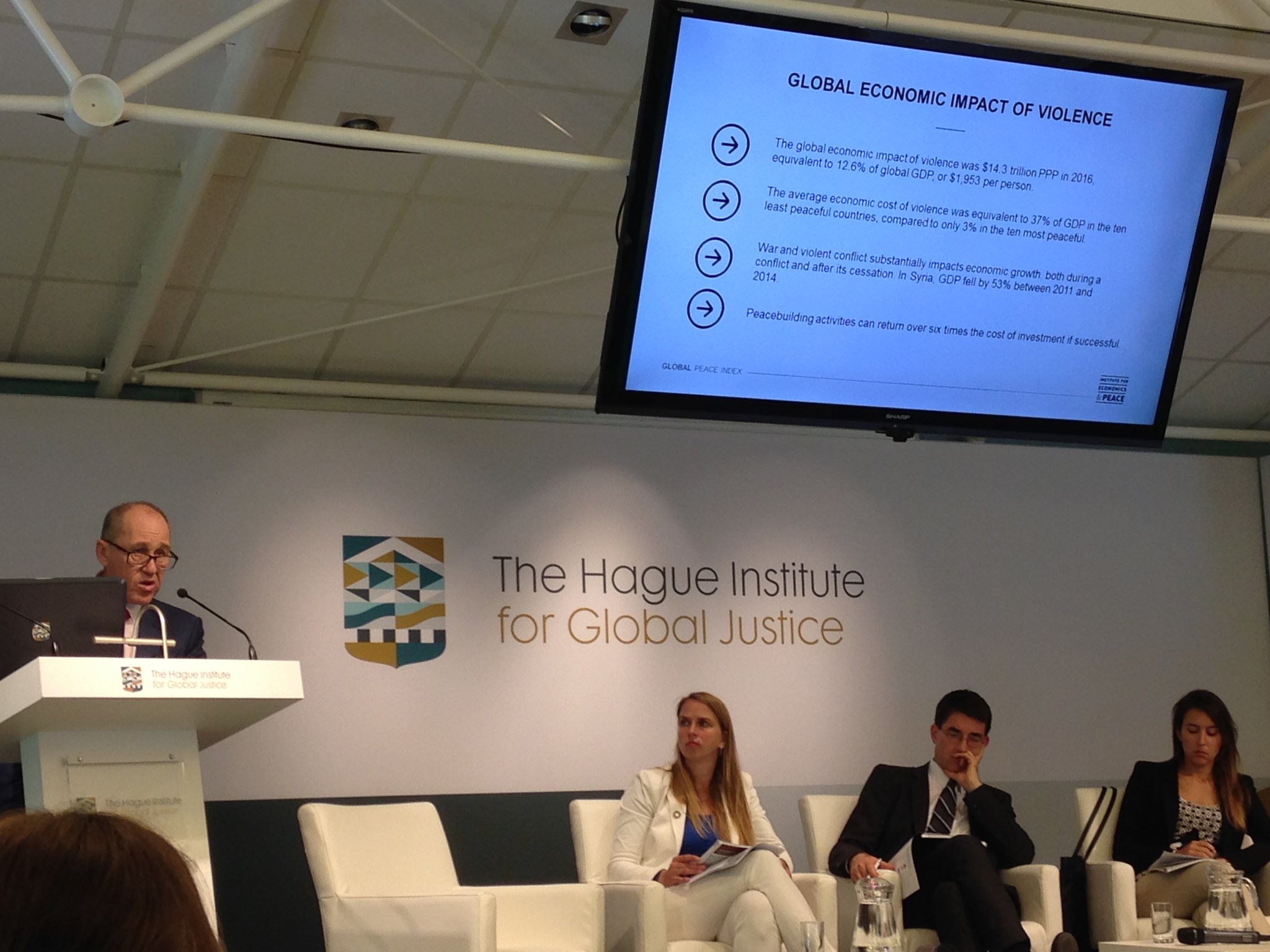 Q. You set up the TCF with your wife Debbie, who is very dedicated to helping children with difficulties. She founded the Be Centre, which provides creative therapies for children. How do you work together, and how has she influenced your philanthropy over the years?
Q. You set up the TCF with your wife Debbie, who is very dedicated to helping children with difficulties. She founded the Be Centre, which provides creative therapies for children. How do you work together, and how has she influenced your philanthropy over the years?
Deb sits on the board of The Charitable Foundation, so she participates in board meetings. We also spend a lot of time together visiting places in the developing world. Debbie probably accompanies me on about 50% of the trips, and as such she’s got quite a good feeling for the realities on the ground. Her background is in working with kids who come from difficult backgrounds, kids with special needs. So she has an interest in projects which are more related towards children than what I would naturally be inclined to do.
One project which stands out in my mind, is a project called Kangaroo Care, in Tanzania. It’s simply about teaching mothers to hold their babies close to their chests, and supplying a pouch so they can do this. In highly stressful environments, it gives something like a 20% better chance of survival for kids at risk.
A few years back, Deb came across a form of therapy called Play Therapy. Most modalities of therapy are designed for adults and don’t really work for children, because their cognitive abilities aren’t developed yet. Play therapy on the other hand, works with children from the level of play. Given the right opportunity and circumstances, kids will naturally play out their traumas. Debbie created a charity called the Be Centre which was one of the pioneers of Child Therapy in Australia and it provides therapy for kids suffering from high levels of trauma ranging from the death of a sibling to sexual abuse.
Q. So you’re also the founder for the Institute for Economics and Peace, and you developed the Global Peace Index. Yet Australia is generally considered fairly peaceful and distant from most conflicts. Why did you choose to focus so much on peace?
About twelve years ago now, I was doing aid work in north east Kivu in the Congo. I was walking through what at that point was one of the most violent places in the world. I started to ask myself what were the most peaceful places I’d been to? What were the most peaceful places in the world, and what could I learn from them? I kept on searching on the internet, couldn’t find a thing, and that’s how the Global Peace Index was born. That’s really profound, because if a simple businessman like myself could be walking through Africa and wonder what the most peaceful nations in the world are and not find an answer, then how much do we actually know about peace? If you can’t measure something, can you truly understand it? How can you know if your actions are helping you or hindering you in achieving your goals?
Q. You’ve been publishing the Global Peace Index for 9 years now, how do you think it has influenced government policy in various countries?
It’s used by all the multilateral organisations. It’s used by many different governments to help guide policy decisions. The measurement itself gives a basis of fact from which to form an opinion. Those statements can vary greatly depending on the country, and what policy makers are looking at. We know with the Global Terrorism Index (another of IEP’s main research outputs), that it’s used by all the major intelligence agencies around the world, because it’s a reference point to go to which helps them understand the global impact of terrorism, and the way it operates.
Q. So you noted that in 2016 the “second largest improvement was recorded in the security officers and police rate indicator, with the number of countries that have high levels of police and internal security officers decreasing.” Could you explain why this decrease is an improvement? To some, it may seem that the indicator is picking up a trend of more states going soft and becoming unstable. Why is that the wrong way to read that indicator?
Answering these type of questions gets very complex. What I want you to think about is three different scenarios. Each of these is a measurement of violence. The first scenario is one with high numbers of police and security officers. So you have a police state, such as North Korea, where every tenth person is attached to the security services. The second scenario is pretty much the American model, where really harsh penalties apply and it’s easy to get convictions. So you have very high levels of incarceration. And the third scenario is where you have almost no jails and an incompetent police force, leading to rampant crime. The most peaceful countries are the ones that have the least of all three outlined scenarios. Therefore you can’t look at one of these models in isolation. The most peaceful countries have a combination of the lowest number of police, the lowest number of people incarcerated, and the lowest number of crime. And that’s the optimum state, which is what we’re trying to measure.
One of the things we’ve found, is that there seems to be an optimal level of spending on violence containment. That’s all money spent on trying to contain violence: military, police, incarceration, judiciary system, and a lot more. The most highly peaceful nations spend about 3% of GDP. Spending under that, you don’t actually achieve peace. Spending above that is usually associated with more coercive states.
Q. Do you think there is a chance that the modern world can ever reverse this trend towards ever increasing war and political instability? What do you think is the greatest threat to world stability: terrorism, a rise in authoritarian regimes, or other factors?
Trying to crystal ball into the future is very difficult. So any comments one makes are always given with a lot of hesitancy. I think Afghanistan is a country we need to pay a lot more attention to. In Afghanistan, about 20,000 people were killed in 2016. That’s battlefield deaths. Over the past decade, every year bar one, the number of people killed on that battlefield has increased. The alliance that was active in Afghanistan has now withdrawn, and the fifty countries there are down to four. I think Afghanistan is going to come back on the map, over and above many other problems for us. If you took the Middle East and North Africa region out of our rankings, the average levels of peace in the world has increased over the past decade. This highlights the need to be able to get solutions to what appears to be intractable conflicts in the Middle East.
Q. Do you think capitalism is the best economic system to create peace and prosperity for all? What reforms, if any, do you see as necessary?
Obviously I’m a capitalist all the way. If we look through history, people have always wanted to create businesses. I think in some ways capitalism is built into the human spirit. Countries with communist regimes haven’t lasted more than sixty years, they’ve all collapsed back into some form of capitalism. So the issue is not capitalism, the issue is how capitalism interfaces within a society. And this in many ways comes back to the social contract, and government regulations.
We need to figure out new ways to distribute wealth.
At the moment we are witnessing rising levels of inequality between the rich and the poor. Part of this is an inevitable trend which is driven by technology. We now have the ability to deploy technologies globally. So the wealth accumulates to the owner of those technologies. That’s why we see overnight tech billionaires, like Zuckerberg. We need to figure out new ways to distribute wealth. One of the ways capitalism has distributed wealth over the years is by employing people. That acts as a mechanism for the distribution of wealth through society. To do that, there has to be a fairness in the rates of labour compared to the profits of capitalism. I think this is an area governments and society need to look at.
But the broader question if you’re looking at the modern world, is “What is the social contract?” We can see in the US people are struggling. The old social contract isn’t working, the society needs to realign. We’re seeing it break down in Europe as evidenced by the rise of populist parties.
Q. Are there any final thoughts you want to leave us with?
One of the most profound pieces of work to come out of the Institute for Economics and Peace is a concept known as “Positive Peace” (2016 Report). That’s the attitudes, institutions and structures that create and sustain peaceful societies. This body of work provides a roadmap for how we can create peace within society.
What’s profound about Positive Peace is that it’s also a framework for many other things which we as human beings desire. Societies high in positive peace also perform very well on a whole range of other measures. Their capital and GDP growth rates are much stronger, their business environments are better, they do better on measures of ecology, better on measures of inclusion and gender rights, better on measures of resilience.
Countries which are strong in Positive Peace have much less civil resistance. The resistance movements last for a shorter amount of time, they are limited in their aims, more likely to achieve their aims, and far less violent. Why is that? It is because of the adaptive qualities of societies that are high in Positive Peace. This is a framework which describes what is necessary to create societies which are both resilient and adaptable.
As we look at many of the major challenges facing humanity in the twenty first century, a lot of them are global in nature. Societies which can cope best with these changes, such as climate change, decrease in biodiversity and in fresh water, or overpopulation, are countries which will have the highest levels of adaptability. They will be the countries with the highest levels of Positive Peace. As such, understanding how to strengthen Positive Peace levels is key.
EDITOR’S NOTE: The opinions expressed here by Impakter.com columnists are their own, not those of Impakter.com. FEATURED PHOTO CREDIT: Institute for Economics and Peace INFOGRAHIC: Statista Link


